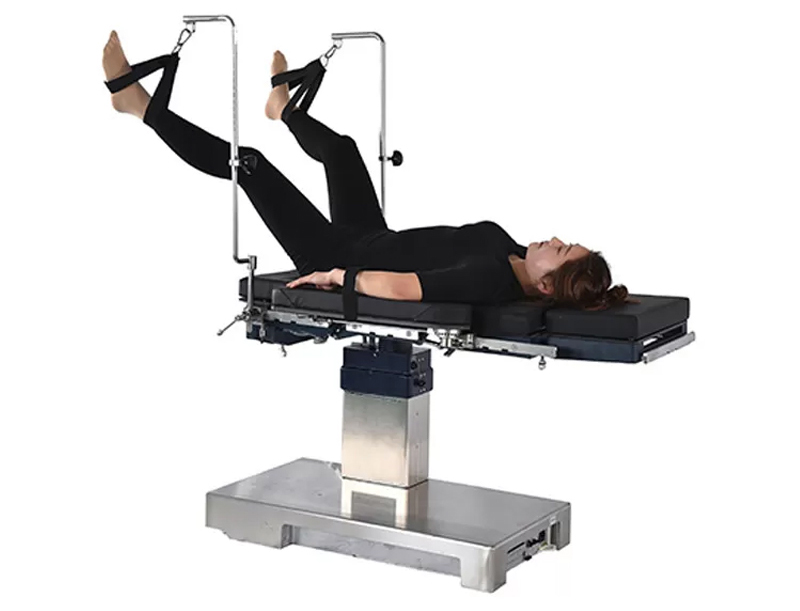

What Are Candy Cane Stirrups?
Candy Cane Stirrups are a type of leg positioning device commonly used to support the lower limbs of a patient during procedures in the lithotomy position. Named for their distinctive curved shape, these stirrups are typically attached to the sides of an operating table and are adjustable in height and angle. They consist of padded U-shaped supports that cradle the patient’s calves, along with vertical posts and clamps that provide stability and customization.

Clinical Applications
Candy Cane Stirrups are especially useful in:
- Gynecologic surgeries (e.g., hysterectomy, dilation and curettage)
- Urologic procedures (e.g., cystoscopy, TURP)
- Colorectal operations (e.g., hemorrhoidectomy, lower rectal surgeries)
- Diagnostic exams (e.g., pelvic exams under anesthesia)
Advantages of Candy Cane Stirrups
1. Cost-effective: Compared to boot-style stirrups, candy cane stirrups are more economical.
2. Adjustability: Surgeons and nurses can easily modify leg height and angle intraoperatively.
3. Space-saving: Their minimal design is ideal for smaller operating rooms.
4. Quick setup: Reduces prep time for emergent procedures.
Potential Risks and How to Mitigate Them
Despite their benefits, improper use of Candy Cane Stirrups can lead to complications such as:
- Peroneal nerve injury
- Compartment syndrome
- Pressure ulcers
- Venous stasis or DVT
Preventive strategies include:
- Use adequate padding
- Avoid excessive abduction or elevation
- Limit operative time in the lithotomy position
- Perform regular neuromuscular checks during long procedures
Selecting the Right Candy Cane Stirrups
When choosing stirrups for your facility, consider:
- Build material and durability (e.g., stainless steel vs. aluminum)
- Padding quality
- Compatibility with OR tables
- Ease of cleaning and sterilization
- Manufacturer support and warranty
Candy Cane Stirrups vs. Boot Stirrups: What's the Difference?
| Feature | Candy Cane Stirrups | Boot-Style Stirrups |
| Support Location | Calves | Entire lower leg/heel |
| Risk of Nerve Injury | Higher | Lower |
| Cost | Lower | Higher |
| Adjustability | Moderate | High |
| Comfort | Less | More |
Choosing between the two often comes down to procedural requirements and institutional budget.
Conclusion
Candy Cane Stirrups remain a mainstay in surgical positioning due to their simplicity and efficiency. While not without risks, proper usage and awareness can ensure patient safety and surgical success. When selecting stirrups, balancing cost with ergonomic and safety features is key to optimizing outcomes.
References
1. Cigna, S., et al. "Surgical Positioning Injuries: Prevention and Management." Surgical Clinics of North America, vol. 95, no. 4, 2015, pp. 773–785.
2. Rothrock, J.C. Alexander’s Care of the Patient in Surgery. 16th ed., Elsevier, 2018.
3. Association of periOperative Registered Nurses (AORN). “Guidelines for Patient Positioning.” 2023.
4. Yoon, H.S., et al. “Lithotomy Position-Related Complications: What Every Surgeon Should Know.” International Journal of Surgery, vol. 43, 2017, pp. 171–175.
5. Pandit, S.K., et al. “Positioning Injuries in the OR: A Closer Look.” Anesthesiology Clinics, vol. 36, no. 1, 2018, pp. 145–158.